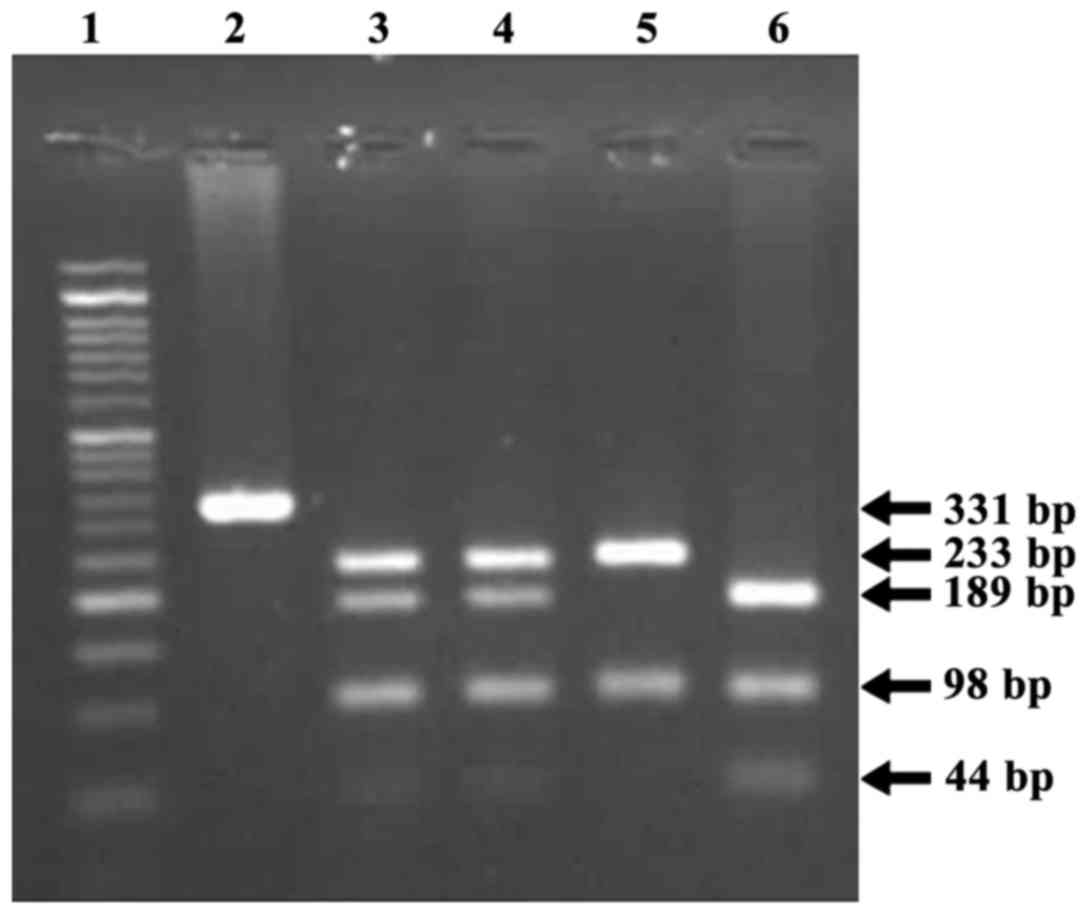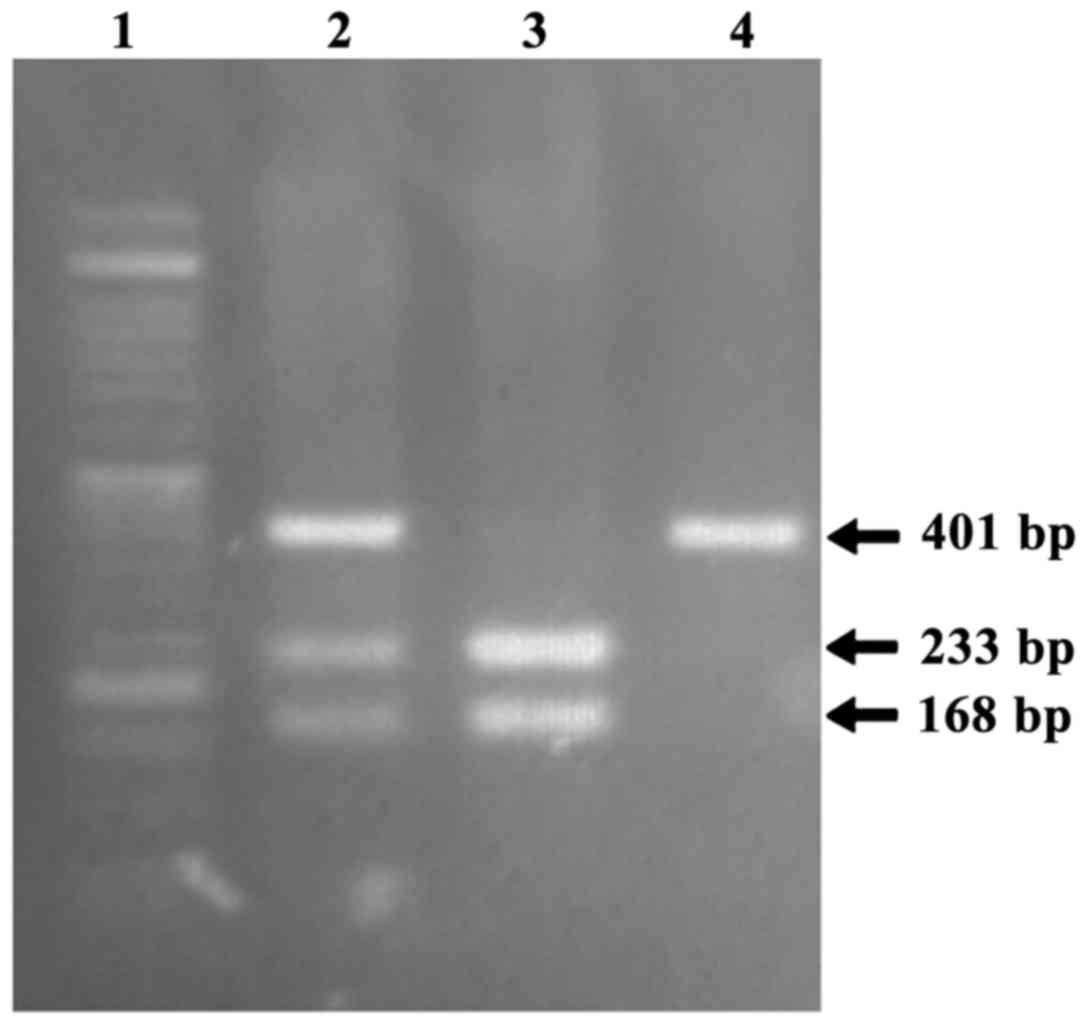|
1
|
Tsuchida S, Satoh M, Takiwaki M and Nomura
F: Ubiquitination in Periodontal Disease: A Review. Int J Mol Sci.
18:14762017. View Article : Google Scholar
|
|
2
|
Prakash P and Victor D: Interleukin-1b
gene polymorphism and its association with chronic periodontitis in
South Indian population. Int J Genet Mol Biol. 2:179–183. 2010.
|
|
3
|
Ayazi G, Pirayesh M and Yari K: Analysis
of interleukin-1β gene polymorphism and its association with
generalized aggressive periodontitis disease. DNA Cell Biol.
32:409–413. 2013. View Article : Google Scholar : PubMed/NCBI
|
|
4
|
Wang S, Wang F, Shi X, Dai J, Peng Y, Guo
X, Wang X, Shen H and Hu Z: Association between manganese
superoxide dismutase (MnSOD) Val-9Ala polymorphism and cancer risk
- A meta-analysis. Eur J Cancer. 45:2874–2881. 2009. View Article : Google Scholar : PubMed/NCBI
|
|
5
|
Armitage GC: Development of a
classification system for periodontal diseases and conditions. Ann
Periodontol. 4:1–6. 1999. View Article : Google Scholar : PubMed/NCBI
|
|
6
|
Guzeldemir E, Gunhan M, Ozcelik O and
Tastan H: Interleukin-1 and tumor necrosis factor-alpha gene
polymorphisms in Turkish patients with localized aggressive
periodontitis. J Oral Sci. 50:151–159. 2008. View Article : Google Scholar : PubMed/NCBI
|
|
7
|
Brett PM, Zygogianni P, Griffiths GS,
Tomaz M, Parkar M, D'Aiuto F and Tonetti M: Functional gene
polymorphisms in aggressive and chronic periodontitis. J Dent Res.
84:1149–1153. 2005. View Article : Google Scholar : PubMed/NCBI
|
|
8
|
Droździk A, Kurzawski M, Safronow K and
Banach J: Polymorphism in interleukin-1beta gene and the risk of
periodontitis in a Polish population. Adv Med Sci. 51 Suppl
1:13–17. 2006.PubMed/NCBI
|
|
9
|
Darvishi E, Aziziaram Z, Yari K, Bagheri
Dehbaghi M, Kahrizi D, Karim H, Vaziri S, Zargooshi J, Ghadiri K,
Muhammadi S, et al: Lack of association between the
TNF-α-1031genotypes and generalized aggressive periodontitis
disease. Cell Mol Biol (Noisy-le-grand). 62:63–66. 2016.PubMed/NCBI
|
|
10
|
Kazemi E, Moradi MT, Yari K, Mousavi SA
and Kahrizi D: Association between Manganese Superoxide Dismutase
(MnSOD Val-9Ala) genotypes with the risk of generalized aggressive
periodontitis disease. Cell Mol Biol (Noisy-le-grand). 61:49–52.
2015.PubMed/NCBI
|
|
11
|
Wohlfahrt JC, Wu T, Hodges JS, Hinrichs JE
and Michalowicz BS: No association between selected candidate gene
polymorphisms and severe chronic periodontitis. J Periodontol.
77:426–436. 2006. View Article : Google Scholar : PubMed/NCBI
|
|
12
|
Galbraith GMP, Hendley TM, Sanders JJ,
Palesch Y and Pandey JP: Polymorphic cytokine genotypes as markers
of disease severity in adult periodontitis. J Clin Periodontol.
26:705–709. 1999. View Article : Google Scholar : PubMed/NCBI
|
|
13
|
Hashemi M, Fazaeli A, Ghavami S,
Eskandari-Nasab E, Arbabi F, Mashhadi MA, Taheri M, Chaabane W,
Jain MV and Łos MJ: Functional polymorphisms of FAS and FASL gene
and risk of breast cancer - pilot study of 134 cases. PLoS One.
8:e530752013. View Article : Google Scholar : PubMed/NCBI
|
|
14
|
Darby IA, Bisucci T, Hewitson TD and
MacLellan DG: Apoptosis is increased in a model of
diabetes-impaired wound healing in genetically diabetic mice. Int J
Biochem Cell Biol. 29:191–200. 1997. View Article : Google Scholar : PubMed/NCBI
|
|
15
|
Ji G, Gu A, Hu F, Wang S, Liang J, Xia Y,
Lu C, Song L, Fu G and Wang X: Polymorphisms in cell death pathway
genes are associated with altered sperm apoptosis and poor semen
quality. Hum Reprod. 24:2439–2446. 2009. View Article : Google Scholar : PubMed/NCBI
|
|
16
|
Nagata S: Fas ligand-induced apoptosis.
Annu Rev Genet. 33:29–55. 1999. View Article : Google Scholar : PubMed/NCBI
|
|
17
|
Elmore S: Apoptosis: A review of
programmed cell death. Toxicol Pathol. 35:495–516. 2007. View Article : Google Scholar : PubMed/NCBI
|
|
18
|
Locksley RM, Killeen N and Lenardo MJ: The
TNF and TNF receptor superfamilies: Integrating mammalian biology.
Cell. 104:487–501. 2001. View Article : Google Scholar : PubMed/NCBI
|
|
19
|
Asgari R, Mansouri K, Bakhtiari M,
Bidmeshkipour A, Yari K, Shaveisi-Zadeh F and Vaisi-Raygani A:
Association of FAS-670A/G and FASL-844C/T polymorphisms with
idiopathic azoospermia in Western Iran. Eur J Obstet Gynecol Reprod
Biol. 218:55–59. 2017. View Article : Google Scholar : PubMed/NCBI
|
|
20
|
Sun T, Miao X, Zhang X, Tan W, Xiong P and
Lin D: Polymorphisms of death pathway genes FAS and FASL in
esophageal squamous-cell carcinoma. J Natl Cancer Inst.
96:1030–1036. 2004. View Article : Google Scholar : PubMed/NCBI
|
|
21
|
Wu J, Alizadeh BZ, Veen TV, Meijer JW,
Mulder CJ and Pena AS: Association of FAS (TNFRSF6)-670 gene
polymorphism with villous atrophy in coeliac disease. World J
Gastroenterol. 10:717–720. 2004. View Article : Google Scholar : PubMed/NCBI
|
|
22
|
Huang QR, Morris D and Manolios N:
Identification and characterization of polymorphisms in the
promoter region of the human Apo-1/Fas (CD95) gene. Mol Immunol.
34:577–582. 1997. View Article : Google Scholar : PubMed/NCBI
|
|
23
|
Li M, Sun D, Li C, Zhang Z, Gao L, Li K,
Li H and Gao T: Functional polymorphisms of the FAS gene associated
with risk of vitiligo in Chinese populations: A case-control
analysis. J Invest Dermatol. 128:2820–2824. 2008. View Article : Google Scholar : PubMed/NCBI
|
|
24
|
Wu J, Metz C, Xu X, Abe R, Gibson AW,
Edberg JC, Cooke J, Xie F, Cooper GS and Kimberly RP: A novel
polymorphic CAAT/enhancer-binding protein β element in the FasL
gene promoter alters Fas ligand expression: A candidate background
gene in African American systemic lupus erythematosus patients. J
Immunol. 170:132–138. 2003. View Article : Google Scholar : PubMed/NCBI
|
|
25
|
Khocht A, Heaney K, Janal M and Turner B:
Association of interleukin-1 polymorphisms with periodontitis in
Down syndrome. J Oral Sci. 53:193–202. 2011. View Article : Google Scholar : PubMed/NCBI
|
|
26
|
Moradi MT, Yari K and Khodarahmi R: A
novel, efficient, fast and inexpensive DNA extraction protocol from
whole blood applicable for studying drug-DNA interaction. J Rep
Pharm Sci. 3:80–84. 2014.
|
|
27
|
Yari K, Afzali S, Mozafari H, Mansouri K
and Mostafaie A: Molecular cloning, expression and purification of
recombinant soluble mouse endostatin as an anti-angiogenic protein
in Escherichia coli. Mol Biol Rep. 40:1027–1033. 2013.
View Article : Google Scholar : PubMed/NCBI
|
|
28
|
Yari K and Rahimi Z, Moradi MT and Rahimi
Z: The MMP-2 −735 C allele is a risk factor for susceptibility to
breast cancer. Asian Pac J Cancer Prev. 15:6199–6203. 2014.
View Article : Google Scholar : PubMed/NCBI
|
|
29
|
Michalowicz BS, Diehl SR, Gunsolley JC,
Sparks BS, Brooks CN, Koertge TE, Califano JV, Burmeister JA and
Schenkein HA: Evidence of a substantial genetic basis for risk of
adult periodontitis. J Periodontol. 71:1699–1707. 2000. View Article : Google Scholar : PubMed/NCBI
|
|
30
|
Voss M, Lettau M, Paulsen M and Janssen O:
Posttranslational regulation of Fas ligand function. Cell Commun
Signal. 6:112008. View Article : Google Scholar : PubMed/NCBI
|
|
31
|
Lima L, Morais A, Lobo F, Calais-da-Silva
FM, Calais-da-Silva FE and Medeiros R: Association between FAS
polymorphism and prostate cancer development. Prostate Cancer
Prostatic Dis. 11:94–98. 2008. View Article : Google Scholar : PubMed/NCBI
|
|
32
|
Menezes NG and Colombo AP: Lack of
association between the TNF-α −308 (G/A) genetic polymorphism and
periodontal disease in Brazilians. Braz Oral Res. 22:322–327. 2008.
View Article : Google Scholar : PubMed/NCBI
|
|
33
|
Heidari Z, Mahmoudzadeh-Sagheb H, Hashemi
M and Rigi-Ladiz MA: Stereological analysis of interdental gingiva
in chronic periodontitis patients with tumor necrosis factor-alpha
(−308 G/A) gene polymorphisms. Gen Cell Tis. 1:e183152014.
|
|
34
|
Brozovic S, Sahoo R, Barve S, Shiba H,
Uriarte S, Blumberg RS and Kinane DF: Porphyromonas
gingivalis enhances FasL expression via up-regulation of
NFkappaB-mediated gene transcription and induces apoptotic cell
death in human gingival epithelial cells. Microbiology.
152:797–806. 2006. View Article : Google Scholar : PubMed/NCBI
|











